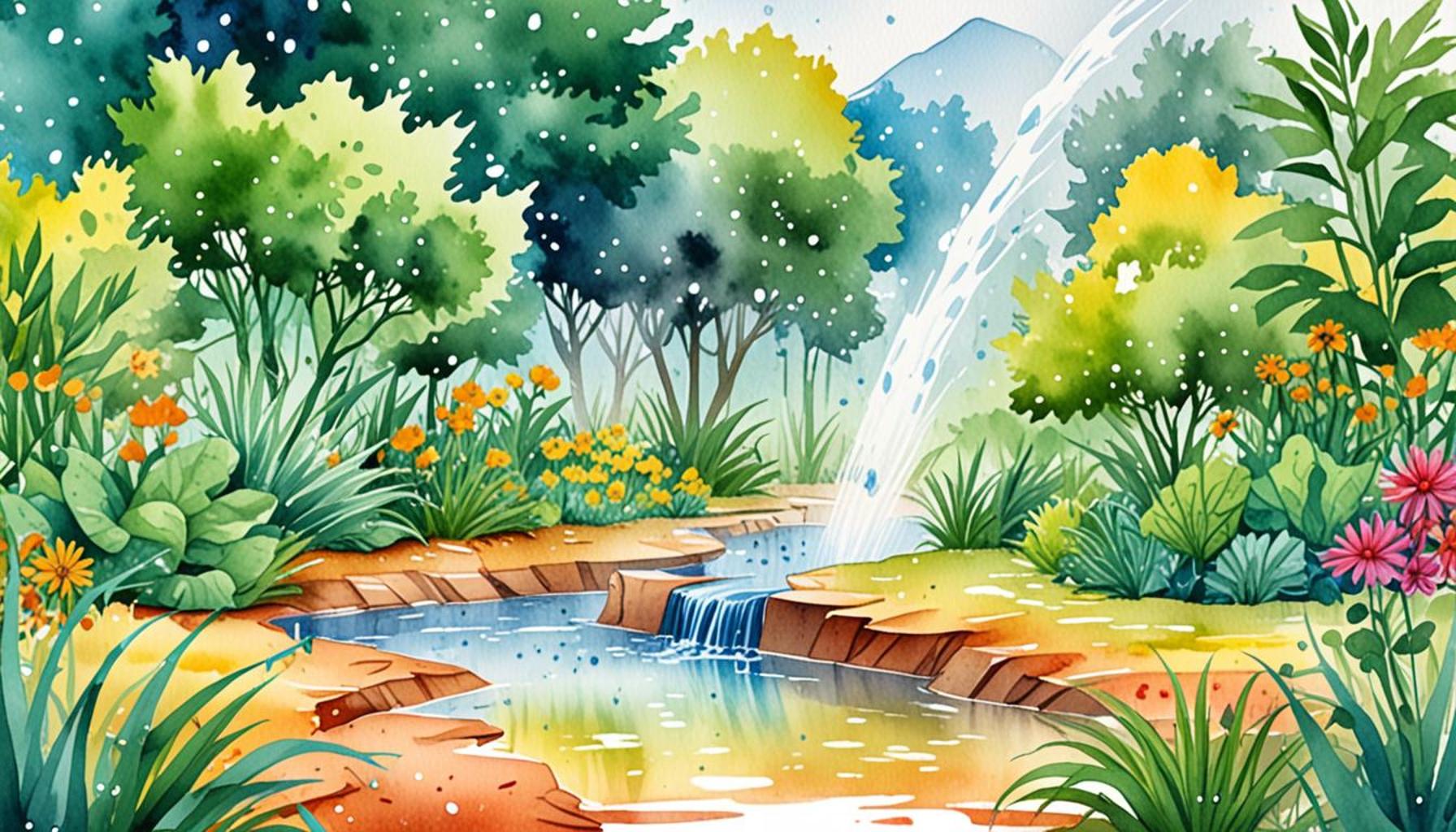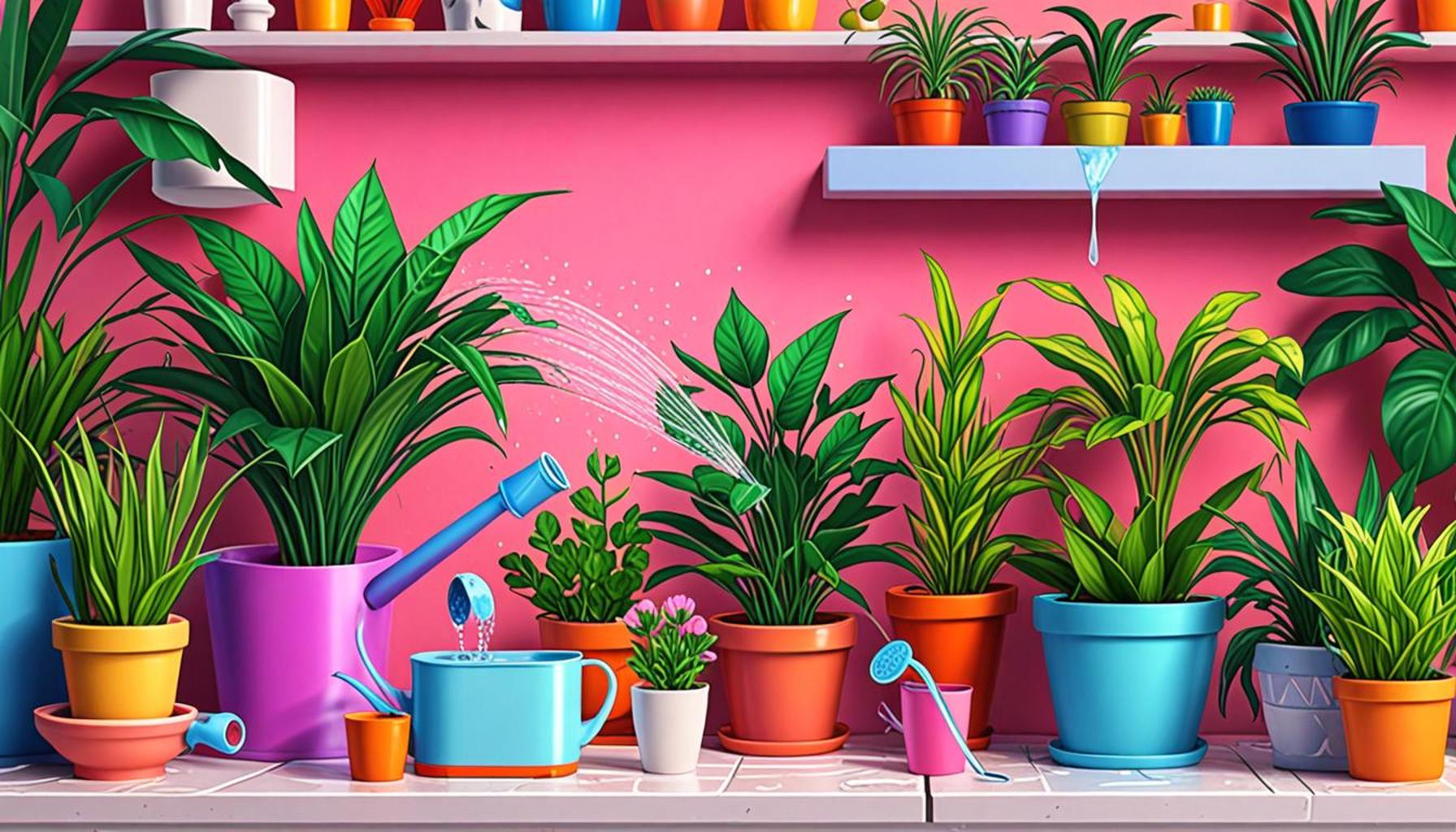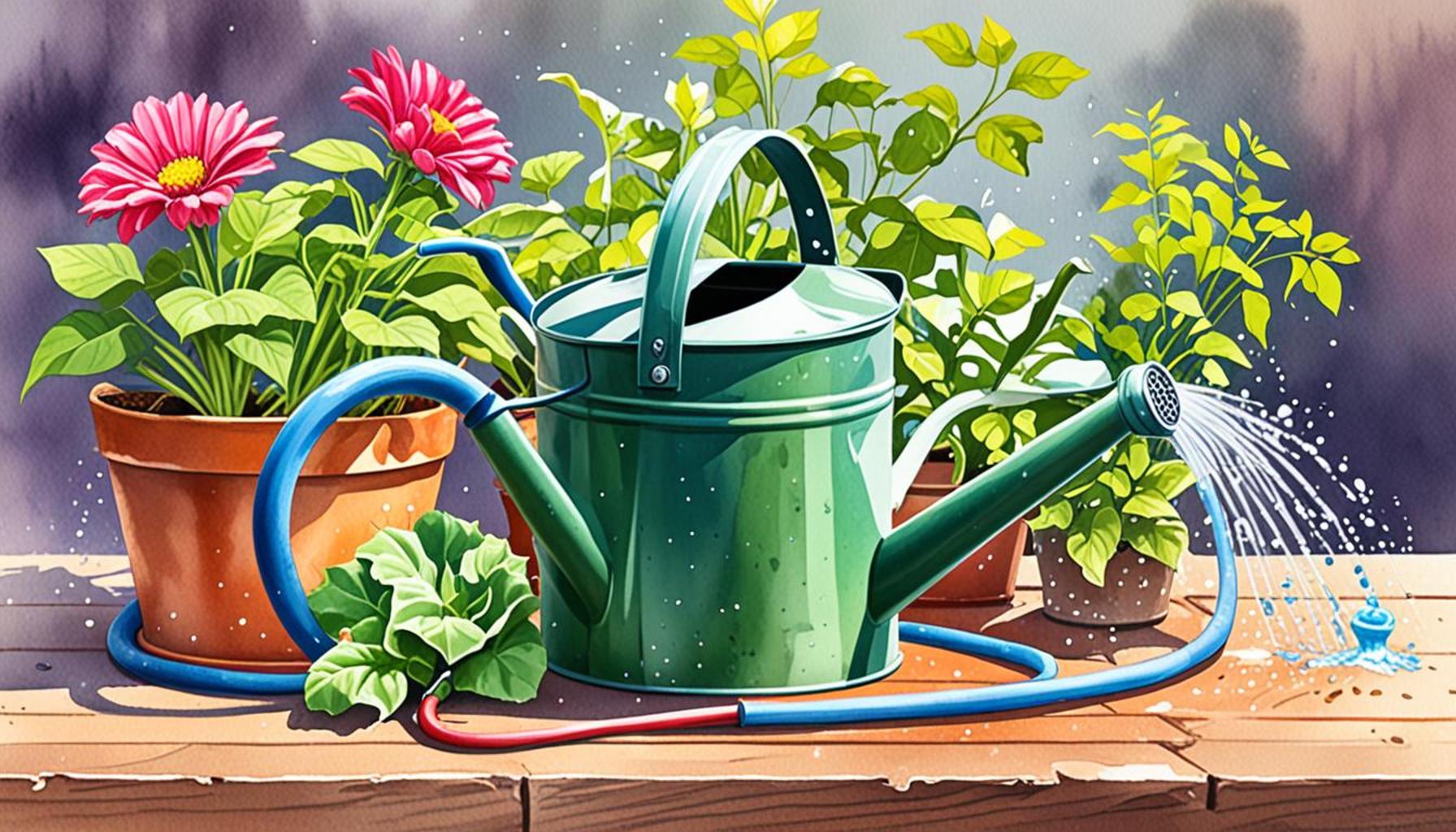How to Identify the Water Needs of Plants: A Practical Approach for Beginners
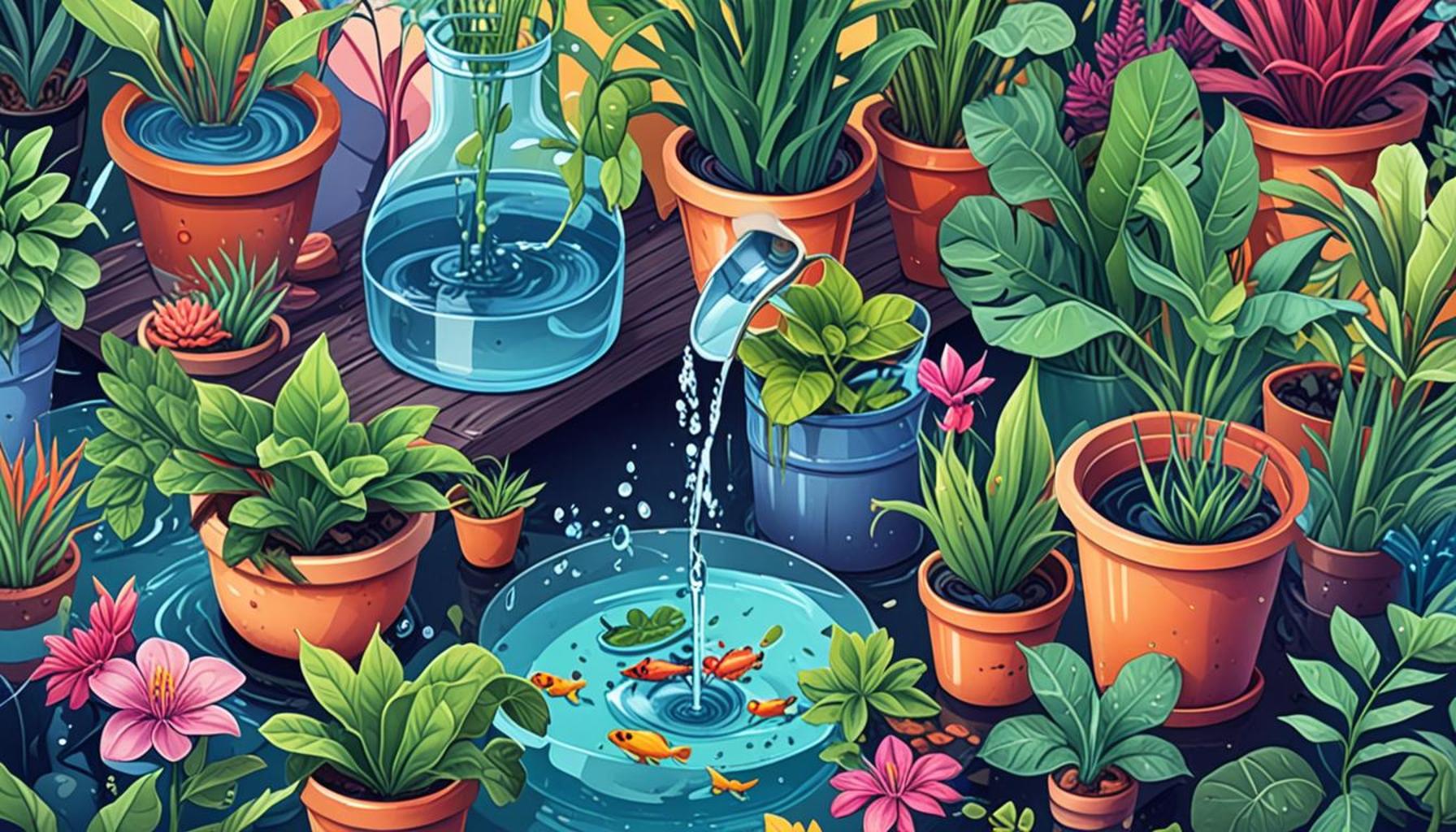
A Comprehensive Guide to Plant Water Needs
Water serves as the lifeblood of plants, intricately connected to their growth, vitality, and overall health. For novice gardeners, understanding the nuances of effective watering can be a challenging task. This guide aims to break down the complexities involved, providing essential insights to help you cultivate a flourishing garden filled with thriving greenery.
Why Watering Matters
Effective watering is crucial for the survival and optimal development of plants. Here are some key reasons to consider:
- Promotes Growth: Adequate water ensures that plants can grow robust roots, develop lush leaves, and produce bountiful fruits. For instance, a well-watered tomato plant can yield more fruit compared to one with insufficient moisture, as it can adequately transport nutrients from the soil.
- Prevents Diseases: Proper moisture levels create an environment in which plants can thrive, thereby reducing the risk of ailments like root rot, which commonly results from overwatering, and fungal infections, which can ensue from a consistently damp atmosphere.
- Enhances Soil Quality: Regular watering helps maintain a healthy soil structure. When soil is too dry or too wet, it can hinder the absorption of vital nutrients, leading to weaker plants. Well-watered soil promotes microbial activity essential for nutrient cycling, making it more fertile.
Factors Influencing Water Needs
Identifying how much water your plants require involves considering several interrelated factors:
- Plant Type: Different species have distinct water requirements. For instance, cacti and other succulents thrive in arid conditions and require infrequent watering, while tropical plants like ferns flourish in moist environments. Familiarizing yourself with the needs of individual species can greatly enhance your gardening success.
- Climate: Local weather patterns significantly influence evaporation rates. For example, during hot summer months in states like Texas or Arizona, plants may require daily watering, while cooler states such as Maine may support less frequent watering schedules. Observing local weather trends can guide your watering adjustments.
- Soil Composition: The type of soil in your garden can affect how often and how much you should water. Sandy soils drain quickly and necessitate more frequent watering, while clay soils retain moisture for longer periods, requiring less frequent attention. Conducting a simple soil test can give you insights into its composition and water retention abilities.
By understanding these fundamental concepts about plant hydration, you can refine your watering techniques. Your efforts will manifest in the form of robust plants that enhance your garden’s aesthetic and ecological balance. Continue reading to discover practical strategies for assessing plant hydration effectively and ensure your green companions flourish.
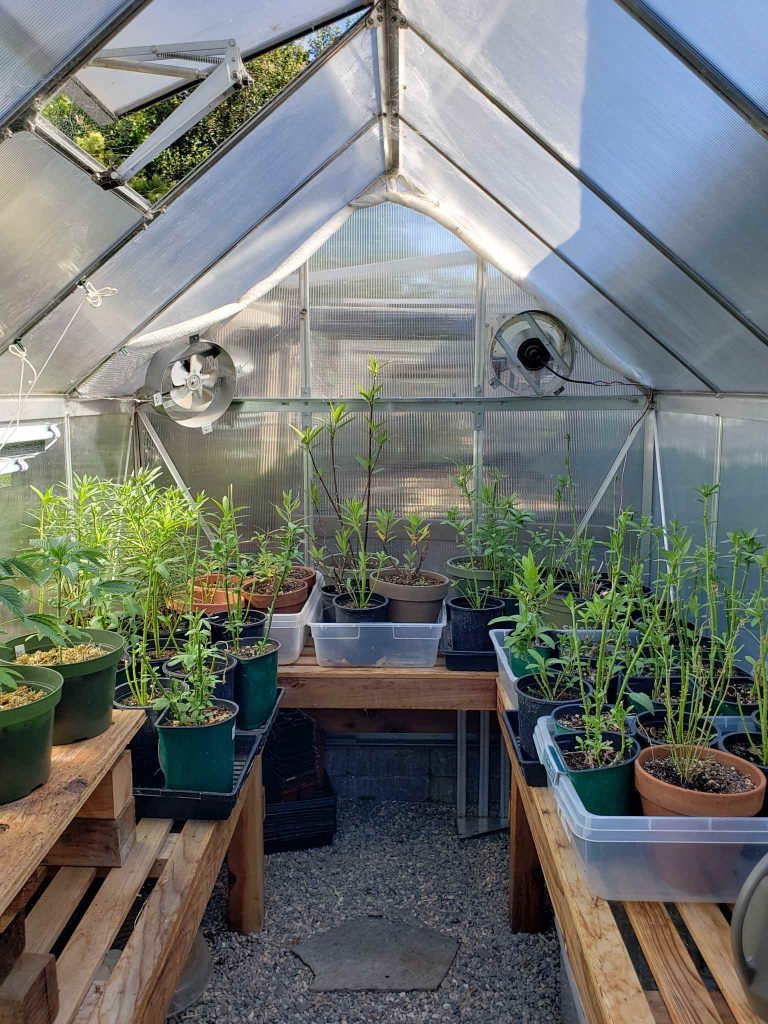
LEARN MORE: Click here for essential tips on soil preparation
Understanding Your Plants’ Watering Requirements
To successfully identify the water needs of your plants, you must first observe their behavior and environment. This practical approach will provide you with crucial insights into when and how much to water. For beginners, the key lies in developing a keen awareness of your plants’ signals and combining this knowledge with practical tools and techniques that can simplify the watering process.
Observing Your Plants
Pay close attention to the physical cues your plants exhibit. Common signs of insufficient water intake include:
- Wilting Leaves: When plants lack water, their leaves begin to droop and lose their turgor pressure. A wilting appearance is often a cry for help.
- Yellowing Foliage: Leaves that turn yellow may indicate stress due to underwatering. This loss of chlorophyll detracts from the plant’s overall health.
- Cracked Soil: If the surface of the soil has developed cracks, it’s a clear sign of dryness below, indicating that the plant isn’t receiving adequate moisture.
It’s essential to conduct a swift assessment of these indicators regularly. For beginners, this observation routine may feel tedious at first, but over time it will become second nature, enabling you to respond accurately to your plants’ hydration needs.
Utilizing the Finger Test
A simple yet effective strategy for gauging soil moisture is the finger test. To conduct this test:
- Insert your finger into the soil about two inches deep.
- If the soil feels dry at this depth, it is time to water.
- If it feels moist, hold off for a bit longer.
This method not only takes the guesswork out of watering but also helps you to foster a connection with your plants. As you become more familiar with their needs through this tactile approach, you’ll begin to notice patterns that will inform your gardening practices.
Leveraging Technology
As technology advances, so too do the tools available to assist novice gardeners. Soil moisture meters are an excellent way to precisely measure the moisture content in your plant’s soil. These handy devices take the guesswork out of watering by providing accurate readings. Some models even connect to smartphone apps, allowing you to receive real-time updates regarding your plants’ hydration status and when they need watering.
Watering Schedule Basics
Another practical approach is establishing a watering schedule. While every plant has unique needs, generally, most houseplants benefit from being watered once a week. Take special care to adjust the frequency according to environmental factors such as:
- Humidity levels
- Temperature fluctuations
- Seasonal changes
By considering these variables, you can create a more effective watering routine that aligns with the natural rhythms of your plants’ environments.
In summary, the identification of your plants’ water needs involves a combination of keen observation, simple tests, and possibly the integration of technology. With these strategies, you will be well on your way to mastering the art of plant care and ensuring your greens thrive beautifully in your garden.
Understanding Plant Water Requirements
Identifying the water needs of plants is a skill that can dramatically enhance gardening success. Different plants require varying amounts of water, depending on their species, size, and the environment in which they are growing. Observing soil moisture levels is crucial; experienced gardeners often recommend checking the top inch or two of the soil. If it feels dry to the touch, it’s time to water. Overwatering, on the other hand, can lead to root rot, a devastating condition for plants.
Factors Influencing Water Needs
Several factors play a role in determining how much water a plant needs. For instance, climate and temperature significantly affect evaporation rates. In hot, arid climates, plants may require more frequent watering compared to cooler, humid environments. Additionally, the type of soil is pivotal; sandy soils drain quickly while clay soils retain moisture. Plants also have specific light requirements that influence their water needs. Shade-loving plants generally require less watering, while sun-loving varieties can quickly deplete moisture from the soil. To aid in accurately assessing water needs, utilizing moisture meters can provide a more confident determination of soil saturation levels. Taking notes on plant responses to watering will help refine your understanding and care routine.With proper attention to these details, beginners can quickly learn to identify the water needs of their plants, ensuring healthy growth and vibrant gardens. Ready to delve deeper into the art of plant care? Consider exploring more resources on climatic effects and specific plant species’ needs.
| Watering Techniques | Key Benefits |
|---|---|
| Soil Moisture Monitoring | Ensures optimal watering, minimizing waste and plant stress. |
| Drip Irrigation | Delivers precise amounts of water directly to plant roots. |
Adapting a practical approach to identifying the water needs of plants can lead not only to healthier plants but also to a deeper connection with nature. Understanding these requirements is key for any budding gardener.
DISCOVER MORE: Click here for essential gardening tips
Advanced Techniques to Determine Plant Water Needs
While basic observation and simple tests provide a solid foundation for identifying plant water needs, delving into advanced techniques can elevate your gardening prowess. These methods incorporate more nuanced aspects of plant care, allowing you to tailor your watering practices even more finely and efficiently.
Understanding Plant Types and Their Preferences
Recognizing that different plants have distinctly different water requirements is a crucial component of effective plant care. For example, succulents and cacti, typically found in arid environments, thrive in dry conditions and require less frequent watering. Conversely, tropical plants such as ferns and peace lilies prefer consistently moist soil.
Researching plant species provides insights into their native environments, helping you understand their water needs more deeply. Additionally, consider factors such as plant size and pot type; larger plants in larger pots may retain moisture differently than smaller, potted plants. Thus, tracking your plant’s growth along with its watering schedule creates a full picture of its requirements.
Environment Observations: Weather and Location
Your plants’ environment significantly influences their water needs, thus necessitating more keen observations. Outdoor gardeners, in particular, should monitor the weather and seasonal changes. For example, during summer heatwaves, plants may require daily watering compared to cooler months when watering can be spaced more widely. Rainy seasons can lead you to skip watering entirely, while drought periods necessitate increased attention to moisture levels.
Additionally, consider the location within your garden or home. Areas that receive full sunlight will dry out faster; while shaded areas will retain moisture longer. The microclimate created by surrounding structures can significantly alter the hydration requirements of your plants, highlighting the importance of location in your watering strategy.
Utilizing Mulch for Moisture Retention
Mulching serves as an excellent technique for conserving soil moisture and regulating soil temperature, thereby reducing the frequency of watering. By applying a layer of organic mulch, such as wood chips or straw, you can minimize evaporation and keep the soil moist. This not only benefits the plants but can also improve soil health by adding organic matter as the mulch decomposes.
As you integrate mulching into your routine, consider the type and depth of the mulch based on your plant species’ preferences. While some plants thrive with a thicker layer, others may prefer less coverage to avoid suffocation or fungal issues.
Establishing a Feedback Loop
Establishing a feedback loop can refine your understanding of your plants’ water needs over time. Keep a garden journal to document your watering routines, weather patterns, and any changes observed in plant health. Noting when you watered, the current weather conditions, and any resulting changes in plant appearance will allow you to observe trends and set more predictive watering schedules.
With time, even beginners will develop an instinctive understanding of their plants’ requirements. By correlating their observations with documented data, they’ll begin to notice patterns that can inform their gardening decisions.
This multifaceted approach to identifying plant water needs opens the door to a more personalized gardening experience. By blending the observational with the analytical, you’ll empower yourself to foster a thriving plant ecosystem in your home or garden, making the journey of plant care an engaging and rewarding endeavor.
DISCOVER MORE: Click here to learn about effective drip irrigation techniques
Conclusion
Understanding the water needs of plants is not just a science; it is an artful blend of observation, knowledge, and intuition. As we’ve explored, beginning gardeners can adopt a practical approach by closely examining their plants and incorporating simple diagnostic techniques. By recognizing the unique water requirements dictated by different plant types and environmental influences, you can craft a tailored watering strategy that keeps your garden thriving.
Adopting advanced methods, such as mulching for moisture retention and maintaining a feedback loop through careful observation and record-keeping, can further enhance your capabilities. By documenting your plants’ responses to different watering schedules and environmental conditions, you’ll gradually develop a more profound understanding of their needs, resulting in a healthier garden ecosystem.
As you embark on this journey, remember that patience is key. Each plant is a living entity with specific requirements and characteristics, and fine-tuning your approach is part of the learning process. Whether you are tending to indoor houseplants or cultivating an outdoor garden, the responsive relationship you build with your plants will enrich your gardening experience and satisfaction.
In conclusion, embracing a systematic yet intuitive approach to understanding plant water needs equips you with the skills to nurture your green companions successfully. So, grab your watering can, take notes, and watch as your confidence flourishes alongside your plants, turning your gardening endeavors into a rewarding adventure.
